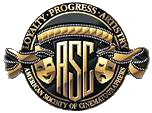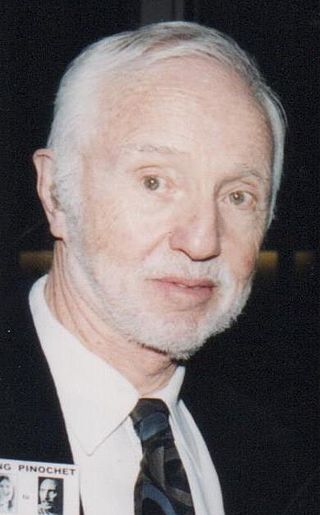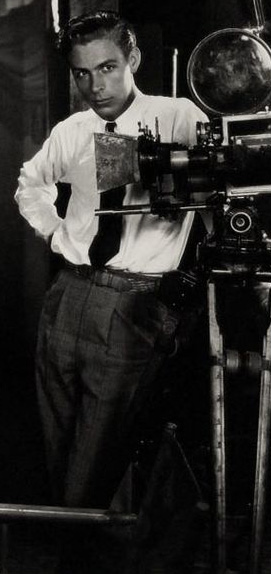
The American Society of Cinematographers (ASC), founded in Hollywood in 1919, is a cultural, educational, and professional organization that is neither a labor union nor a guild. The society was organized to advance the science and art of cinematography and gather a wide range of cinematographers to discuss techniques and ideas and to advocate for motion pictures as a type of art form. Currently, the president of the ASC is Stephen Lighthill.

Vittorio Storaro, A.S.C., A.I.C., is an Italian cinematographer widely recognized as one of the best and most influential in cinema history, for his work on numerous classic films including The Conformist,Apocalypse Now, and The Last Emperor. In the course of over fifty years, he has collaborated with directors such as Bernardo Bertolucci, Francis Ford Coppola, Warren Beatty, Woody Allen and Carlos Saura.

Robert L. Surtees was an American cinematographer who won three Academy Awards for the films King Solomon's Mines, The Bad and the Beautiful and the 1959 version of Ben-Hur. Surtees worked at various studios, including Universal, UFA, Warner Brothers, and MGM, lighting for notable directors Howard Hawks, Mike Nichols, and William Wyler, gaining him a reputation as one of the most versatile cinematographers of his time.

William H. Daniels ASC was a film cinematographer who was Greta Garbo's personal lensman. Early in his career he worked regularly with director Erich von Stroheim.

Charles G. Rosher, A.S.C. was an English-born cinematographer who worked from the early days of silent films through the 1950s.

John Francis Seitz, A.S.C. was an American cinematographer and inventor.

Haskell Wexler, ASC was an American cinematographer, film producer, and director. Wexler was judged to be one of film history's ten most influential cinematographers in a survey of the members of the International Cinematographers Guild. He won the Academy Award for Best Cinematography twice, in 1966 and 1976, out of five nominations. In his obituary in The New York Times, Wexler is described as being "renowned as one of the most inventive cinematographers in Hollywood."

Arthur Edeson, A.S.C. was a film cinematographer, born in New York City. His career ran from the formative years of the film industry in New York, through the silent era in Hollywood, and the sound era there in the 1930s and 1940s. His work included many landmarks in film history, including The Thief of Bagdad (1924), All Quiet on the Western Front (1930), Frankenstein (1931), The Maltese Falcon (1941), and Casablanca (1942).
Victor Milner, A.S.C. was an American cinematographer. He was nominated for ten cinematography Academy Awards, winning once for 1934 Cleopatra. Milner worked on more than 130 films, including dramas, comedies, film noir, and Westerns. He worked for large production companies like Metro-Goldwyn-Mayer, Universal, and Paramount during his film career.

Arthur Charles Miller, A.S.C. was an American cinematographer. He was nominated for the Oscar for Best Cinematography six times, winning three times: for How Green Was My Valley in 1941, The Song of Bernadette in 1944, and Anna and the King of Siam in 1947.

Hal Mohr, A.S.C. was a famed movie cinematographer who won an Oscar for his work on the 1935 film, A Midsummer Night's Dream. He was awarded another Oscar for The Phantom of the Opera in 1943, and received a nomination for The Four Poster in 1952.

Steven Bernstein, ASC, DGA, WGA is an American cinematographer, director, screenwriter and author. In 1992 he won the Best Artistic Contribution Award at the Tokyo International Film Festival for Like Water for Chocolate alongside Emmanuel Lubezki. He also won the Cannes Golden Lion for his work in commercials. His book Film Production has been translated into several languages and at one time was the bestselling textbook about film making. Bernstein was a 2014 ASC nominee for the Outstanding Achievement in Cinematography in One-Hour Episodic Television Series Award for his work on Magic City. Bernstein is a regular contributor to SonyCine Magazine where he writes articles on various aspects of filmmaking. Bernstein is a regular subject matter expert for articles about screenwriting and filmmaking for Adobe creative hub.
Thomas Richmond was an American cinematographer who worked in the film industry since the mid-1980s. His first major feature film as cinematographer was Stand and Deliver (1988), and by the time he shot for A Midnight Clear (1992), he had settled into working with different directors with ease. Richmond described his experience, "All my films look different because they're not my visions; they're my reflections of the directors' visions." In 1998, he said he was most proud of his work on Little Odessa (1994), for which he was nominated an Independent Spirit Award for Best Cinematography. For Right at Your Door (2006), he won the Excellence in Cinematography Award (Dramatic) at the 2006 Sundance Film Festival.

Lucien Andriot ASC (1892–1979) was a prolific French-American cinematographer. He shot more than 200 films and television programs over the course of his career.

Bradford Marcel Young, A.S.C is an American cinematographer. He is best known for his work on Selma, When They See Us, A Most Violent Year, Solo: A Star Wars Story and Arrival, which earned him a nomination for an Academy Award.

Edward Cronjager was an American cinematographer whose career spanned from the silent era through the 1950s. He came from a family of cinematographers, with his father, uncle, and brother all working in the film industry behind the camera. His work covered over 100 films and included projects on the small screen towards the end of his career. He filmed in black and white and color mediums, and his work received nominations for seven Academy Awards over three decades, although he never won the statue.

Robert Kurrle, also known as Robert B. Kurrle, was an American cinematographer during the silent and early talking film eras. Prior to entering the film industry, he was already experimenting with aerial photography. Considered a very prominent cinematographer, even his early work received notice and praise from both critics and other industry professionals. The advent of sound film did not abate his continued rise, and he became the top director of photography at Warner Brothers by 1932.

John Arnold (1889–1964) was an American cinematographer. He began his career in 1914, and in the next 15 years, he shot 86 films. He also worked in film administration, directing the cinematography department at MGM, and was president of the American Society of Cinematographers from 1931 through 1937, and again from 1939 to 1941. By 1938, he was regarded as one of the most authoritative experts on cinematography. He invented several pieces of camera equipment and was awarded two Oscars, both Technical Achievement Awards. The first was in 1938 for improvements on the semi-automatic follow focus device used on motion picture cameras, while the second was in 1940 for the development of the MGM mobile camera crane.

Alice Brooks ASC, is an American director of photography best known for her cinematography work on feature films.

















